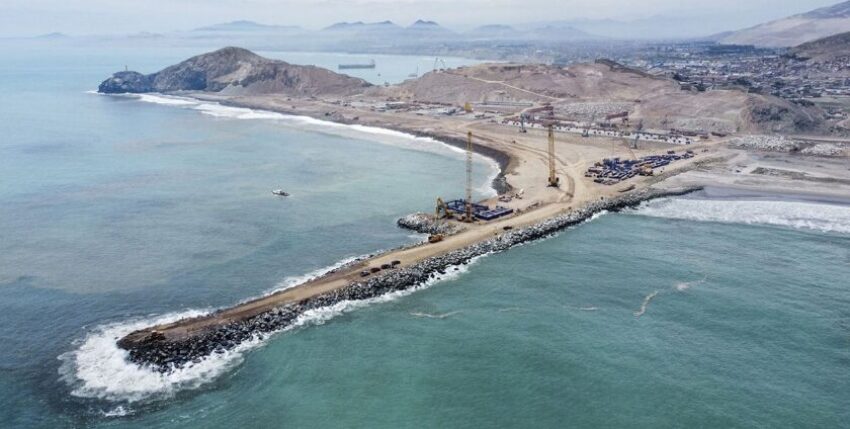Lima - The Chinese state-owned company Cosco Shipping has been building the deep-water port of Chancay on Peru's Pacific coast, around 75 kilometres north of the capital, as the majority owner since 2019. A mega harbour project costing the equivalent of around 3.3 billion euros as a gateway from South America to Asia.
Turnstile
Chancay is set to become the most important container port on the South American Pacific coast as well as an important growth driver for Peru and is part of the Chinese strategic New Silk Road initiative.
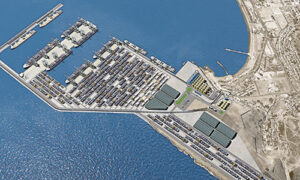
Cosco has already invested over 1.2 billion euros in the first phase of construction, with more than 80 % of construction work completed. The port is scheduled to open in November 2024, when Peru hosts the Asia-Pacific Economic Cooperation summit. Once it opens, it will be able to handle four large freighters at the same time, with a total of fifteen berths available once it is fully expanded in a few years' time. Chancay will then be able to handle 1.5 million 20-foot containers or 6 million tonnes of freight per year.
Harbour area
The port complex is being built on an area of almost ten square kilometres and consists of two parts, the actual port facility and the entrance terminal inland.
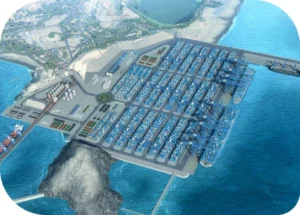
In the harbour area, ships are loaded and unloaded using state-of-the-art technology, with berths for containers and other goods, as well as additional berths for maintenance and repairs.
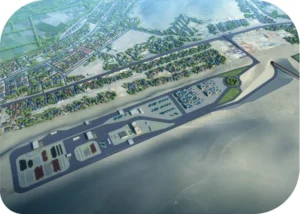
The port administration and logistics companies are located in the entrance terminal. This is where cargo is handled, inspected and customs formalities are carried out. Both parts of the port are connected by a 1.8 kilometre long tunnel.
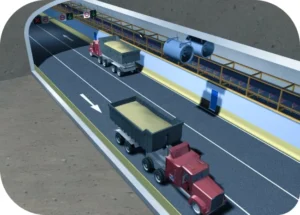
Three lanes for lorries, two conveyor belts for open solid loads and a pipeline for liquids run through it.
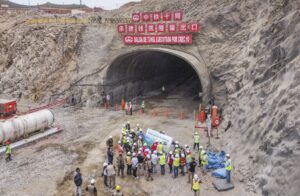
Intersection
According to the operator Cosco, mining products and agricultural goods from Argentina, Bolivia, Brazil, Chile, Ecuador, Colombia and Peru will be shipped to Asia, particularly China, and Chinese industrial products will be transshipped for the South American market in Chancay. Peru is the second largest copper producer in the world, its neighbour Chile even the largest. The world's largest lithium reserves are located in the salt lakes of the so-called "lithium triangle" of Argentina, Bolivia and Chile.
The new port of Chancay is therefore an example of how China is trying to secure the supply of raw materials it needs for its further development in the long term.
Risks
The massive infrastructure development and the expected increase in shipping traffic could jeopardise marine biodiversity and increase pollutant emissions and noise levels. Opponents of the project criticised Cosco's environmental impact assessment in 2018 with a study by a German marine biologist. The study came to the conclusion that the construction of the harbour would cause irreparable damage to the Santa Rosa wetland. In addition, the huge earth movements would drive the erosion of the coastal area and the intensive shipping traffic would jeopardise the marine fauna. Cosco was accused of using an inappropriate methodology in the environmental impact assessment in order to conceal harmful effects from the Peruvian authorities.
The Chinese embassy in Lima denied the allegations. Cosco's study had complied with all the requirements of Peruvian law and met the highest international standards.
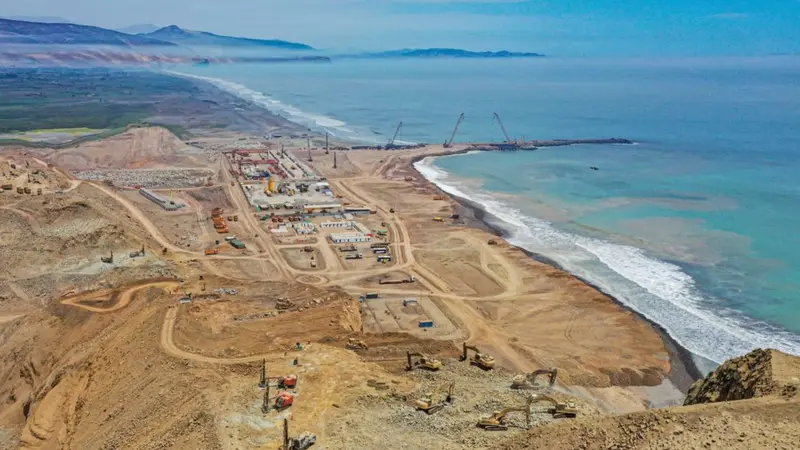
The challenges
While China is now also buying into Latin America, the USA and Europe should rethink their existing trade relations and investment strategies in the region and look for new opportunities for cooperation. Doing nothing after the opening of the port could shift the balance in international trade and lead to increased competition.
Conclusion
The port's strategic location and advanced infrastructure offer the best opportunities for growth and cooperation. However, the construction project also raises questions regarding the geopolitical balance, economic sustainability and environmental responsibility.
We can only hope that Peru does not fall into the so-called "debt trap diplomacy", which can make countries financially dependent on China.
kdk
Source: gCaptain, NZZ, liquid-news

